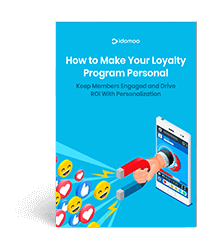Before you can master customer retention, you’ve got to understand people. People, after all, make up 100% of your customer base.
So what makes us purchase? What makes us loyal? Or, conversely, what ultimately pushes us away and makes us check out the competition?
If you’re thinking cost, that’s only one factor, and as you’ll see below, it’s not even the biggest one. In this blog, we’ll shine a light on what motivates customers to stick with the same brand for the long haul. And we’ll talk about how to use retention marketing strategies to boost customer lifetime value.
These are the things your boss wants you to know about customer retention. Ready? Let’s get started.
1. Current Customers Cost Less and Are Worth More
You might have heard this stat — it costs 5x more to attract a new customer than it does to keep one you already have. And current customers are also more likely to buy from you. The chance of closing a sale with an existing customer is around 65% while it’s much lower for prospective customers: a dismal 5%-20%.
The reason behind this is simple. When you’re focusing on customer acquisition, you have to spend a lot to reach a large swathe of people. Conversion rates vary by company and even by target audience, but it’s safe to say that most of the potential buyers you’ll reach won’t be interested in what you offer. And even among those who are interested, for many, it won’t be the right time or it might be out of their budget. Only a sliver of those who see your ads or other outreach efforts will actually make a purchase.
White Paper

Now consider your current customers. You don’t need to spend money getting their contact information so you can reach out. You don’t have to explain who you are or the value you bring (although you can do a better job explaining the value you bring to them specifically — more on this below). And it’s a lot easier to convince them to stay a customer than it is to sell your product or service to a stranger on the street.
Pro tip: You need to know your retention rate benchmark to know how you’re improving. Check out our guide on how to calculate retention rate.
2. Churn Costs More Than You Think
It’s no surprise that in an article about what your boss wants you to know, the first two items are all about the bottom line. It’s great that keeping customers doesn’t cost as much, but losing them costs a lot.
Churn is insidious. It costs companies trillions every year, but because it doesn’t go down as an expense, it’s easy to lose track of the toll it’s taking.
The average retention rate is 75%, making the average churn rate 25%. That’s a serious problem when you consider that for every $1,000 of annual recurring revenue you make in one year, you’ll only have $750 of it the following year. In another year, you’ll have a little over $560. Run those numbers with your total ARR and you’ll see how much you stand to lose.
For industries where it’s harder or more inconvenient for customers to switch, churn is lower. For example, utility providers have a fairly low churn rate of 11%. Here’s a look at churn rates by industry according to the latest research.
Churn rates by industry:
- Insurance — 17%
- Telecommunications — 22%
- Healthcare — 23%
- Banking — 25%
- Retail — 37%
- Hospitality — 45%
Fortunately, although you’ll never get churn down to zero, much of it can be minimised by prioritising customer retention.
3. Personalisation Is Powerful
Most customers want personalisation, and this has a direct effect on loyalty. More than 60% of consumers expect a personalised experience — and will leave the brand if they don’t get it.
Personalisation can seem daunting. How much data does it take to personalise a customer’s experience? The answer might surprise you. Not much. Even a first name adds a human touch.
The key is maximising first-party data. One of the great things about marketing to your current customers is that you already know them. So use that for better customer support, more targeted cross-selling, helpful recommendations and more.
Gartner shares the following 4 tips for those looking to leverage first-party data for personalisation.
- Capture meaningful data when customers sign up. Limit what you require to reduce form fatigue, and let customers segment themselves through content preferences.
- Gather more data after login. If account setup is little more than name and email, you can add personalisation opportunities in the post-login account customisation step.
- Personalise with implicit data. You can use more than explicit data your customer tells you. You can also personalise their experience with data from their behavior, which indirectly tells you what they care about.
- Extend your personalisation to email. Use this data for targeted email messaging to further increase conversion rates with cross-sell and upsell opportunities.
When it comes to personalised online interactions, think about how you can add value. The personalised reminder in the video below helps policyholders keep track of their renewal date. It also includes an upsell offer, but note how the offer is personalised for that specific customer, making it relevant for him.
According to a study of 2,000 consumers, adding personalisation to video is 4x more likely to drive retention than regular video where the message isn’t personalised. And consumers said this kind of video, personalised for them, made them feel 4.5x more valued.
4. Don’t Underestimate Customer Happiness
Zappos, the online retailer that calls itself “a service company that just happens to sell shoes,” understands customer experience management.
Former Zappos CEO Tony Hsieh explains their approach:
“Our whole philosophy became ‘let’s take most of the money we would’ve spent on paid advertising and paid marketing, and instead of spending it on that, invest it in the customer experience [and] customer service, and then let our customers do the marketing for us through word of mouth’ and that became the whole business model.”
Because they recognise the importance of customer happiness and have modeled their goals around customer satisfaction and experience, 75% of Zappos orders are from loyal repeat customers. People keep coming back simply because they know they can count on the brand for an easy, enjoyable shopping experience.
Turns out, naming a quality customer experience as a top priority is a smart move if you’re looking to boost retention. Gartner found that CX drives over 66% of customer loyalty. That’s compared to only 13% driven by price.
We know that a poor customer experience on its own is one of the top reasons for churn. And with the proliferation of online review sites and social channels, it’s easier than ever for those customers to tell others about that bad experience.
That means that one bad experience can have larger ramifications. You might not lose only one customer but also future potential customers. This is particularly problematic when you remember that the friends of your customers often fall into your target audience, too.
If you’re interested in learning more about increasing customer satisfaction, read our guide on customer experience marketing. It has practical tips plus examples from top brands winning the CX game.
More on Customer Retention
Before you go back and tell your boss you’re an expert in customer retention, we have a few more posts you might enjoy.
- Why You Shouldn’t Ignore Customer Retention: Weren’t convinced from reading this blog? This gives you a great overview of why retention matters and what you can do to improve it.
- It’s Time To Take Customer Support as Seriously as Advertising: This takes our conversation above about customer acquisition vs. retention a step further by looking at customer service (a key player in retention).
- The Secret to a Customer-Centric CX: Our CMO wrote this for CMSWire, the leading online customer experience publication. It breaks down exactly how to focus on your customer to boost your bottom line.
If you haven’t guessed it yet, retention is a big part of what we do. As a Personalised Video platform, we help companies talk to their customers in a way that’s personal and human, reducing churn over 30% for many of our clients and increasing NPS at the same time.
We’d love to talk with you about how Personalised and Interactive Video can boost retention for your brand. Got 15 minutes? Schedule a call, and we’ll show you the Idomoo magic.





